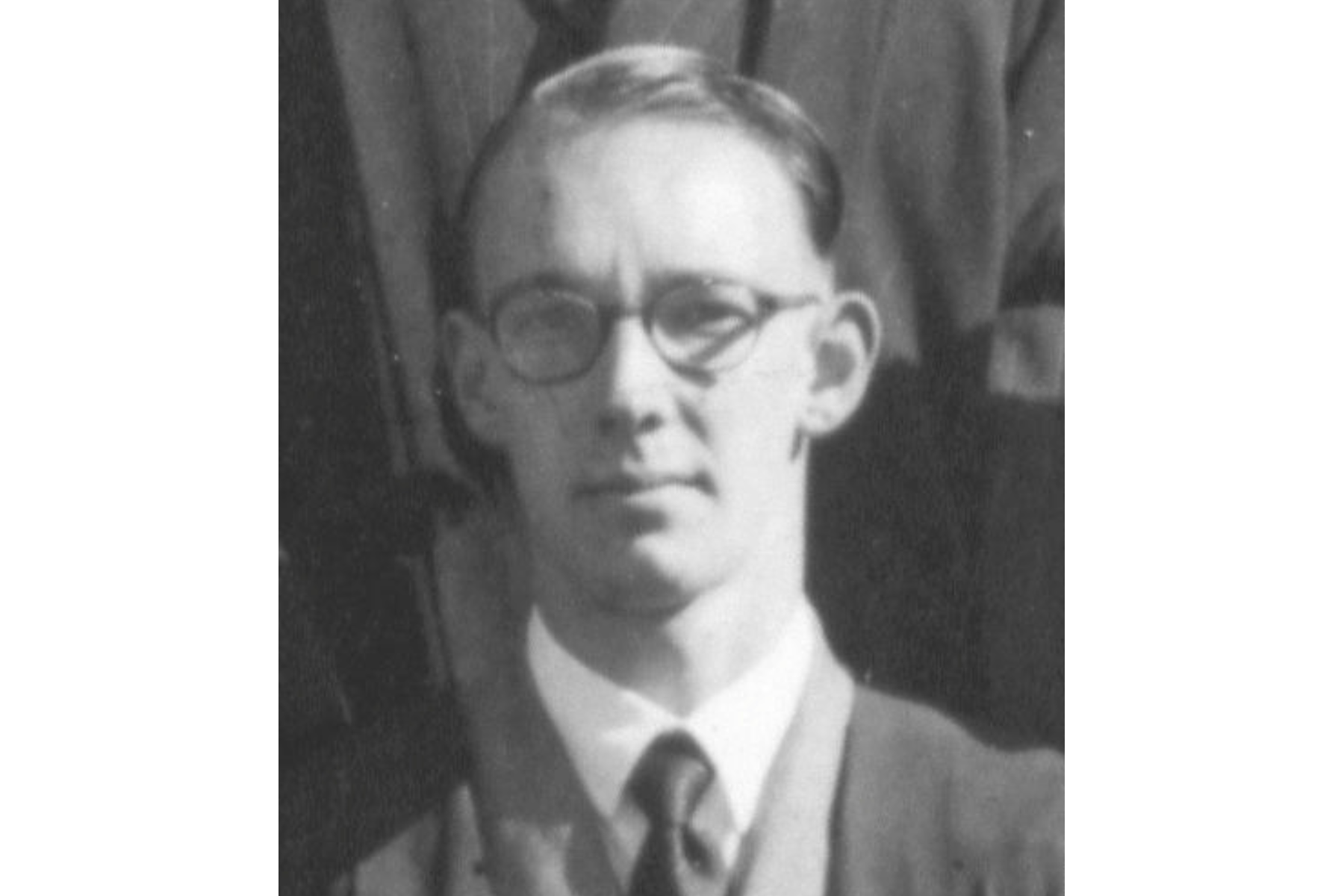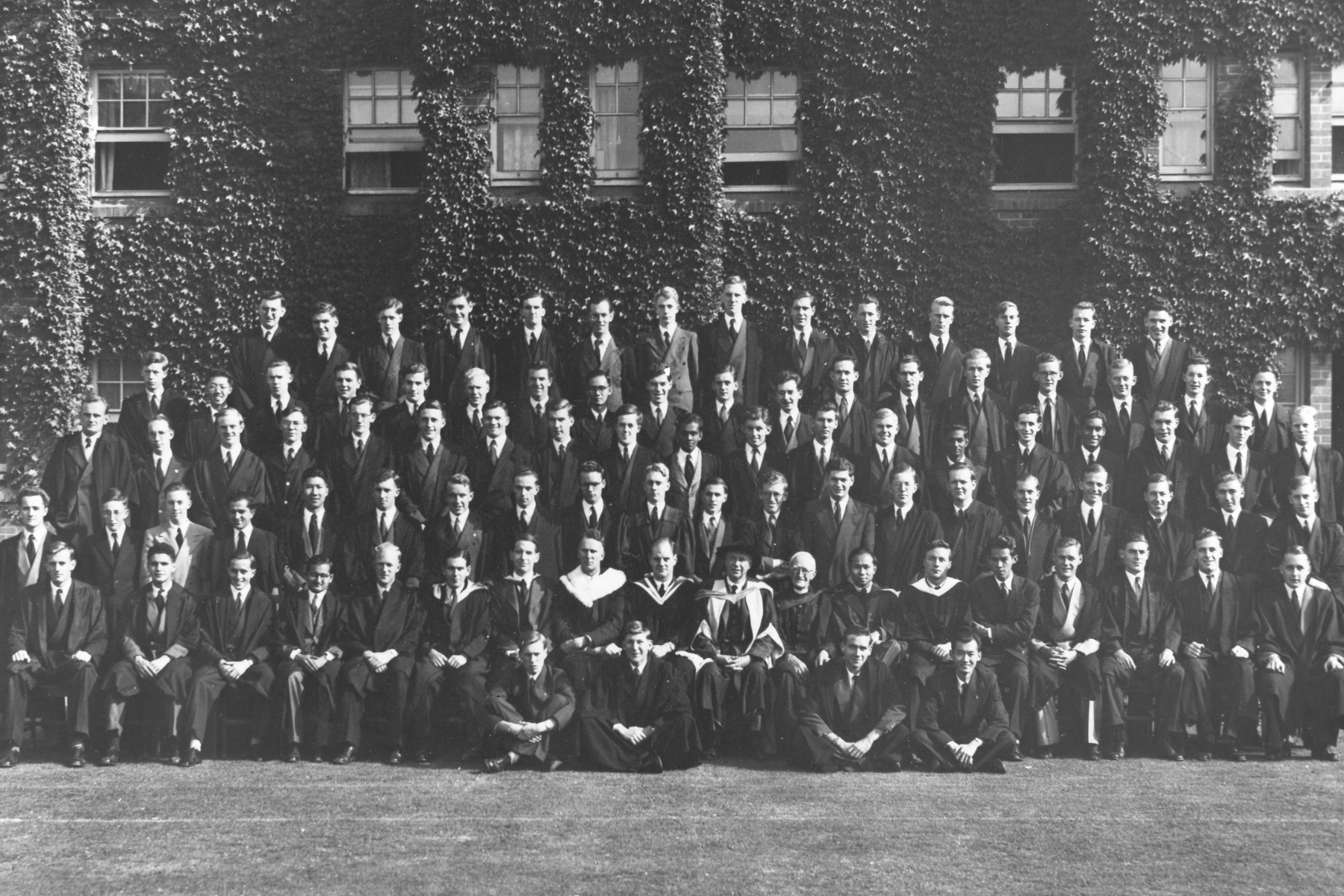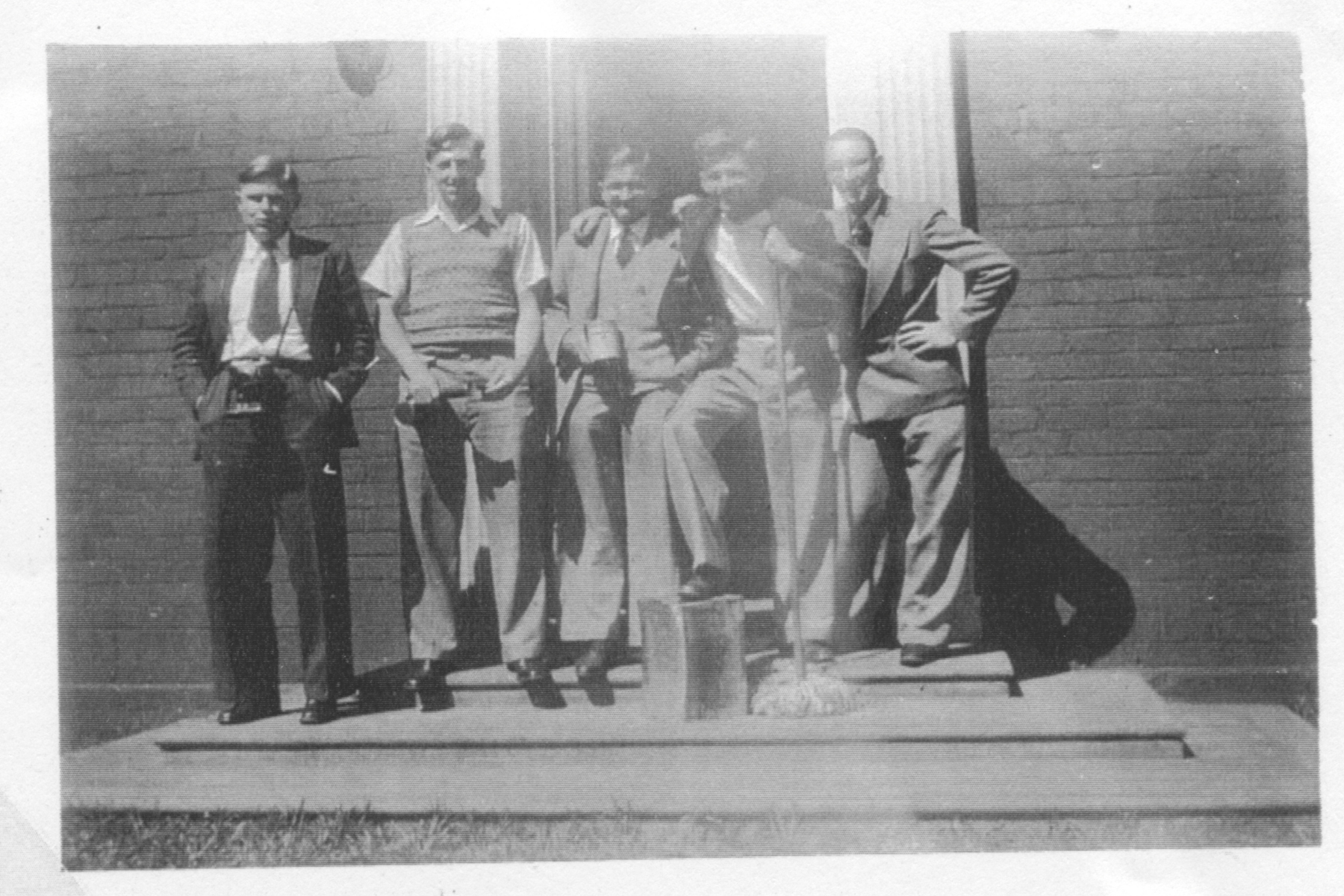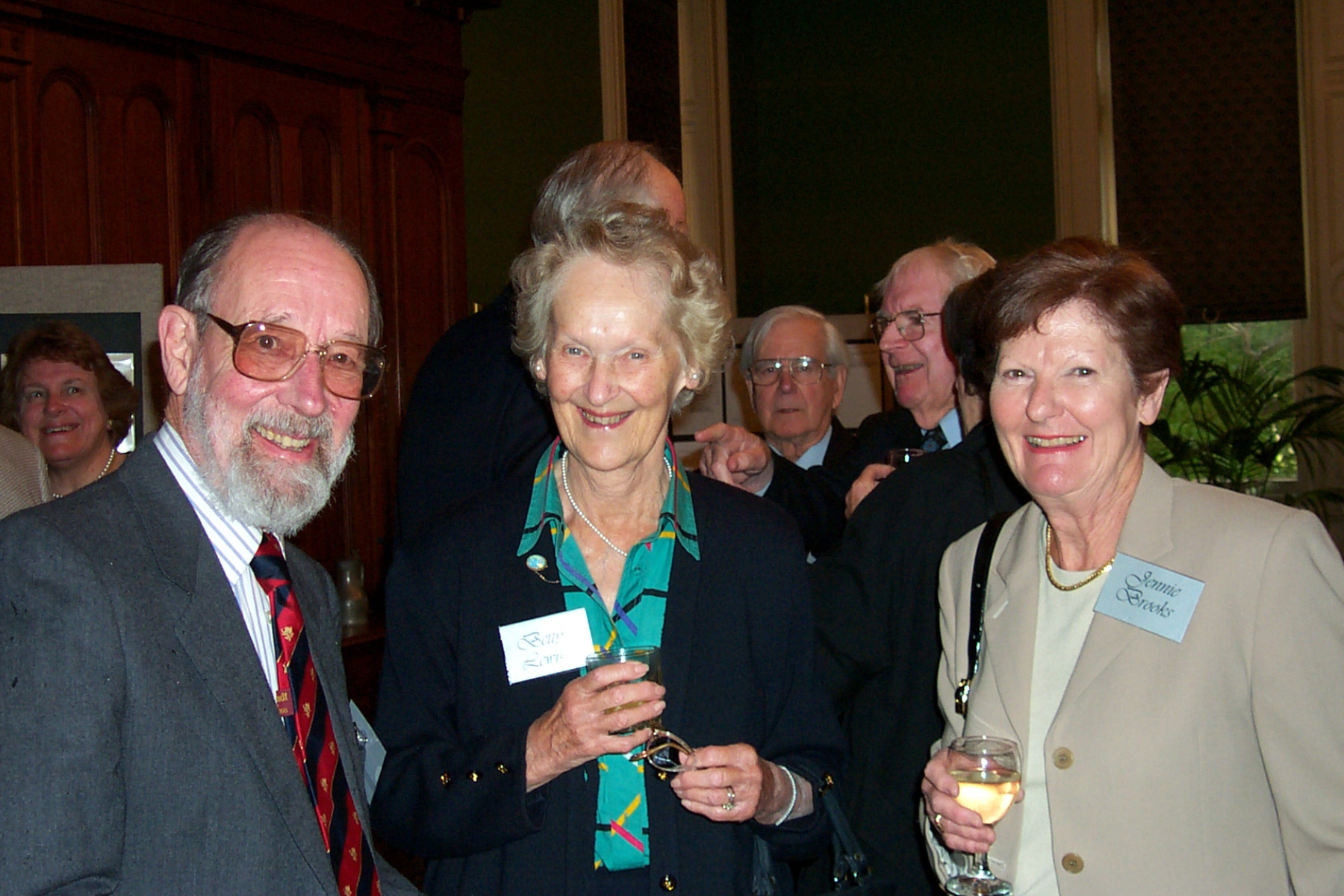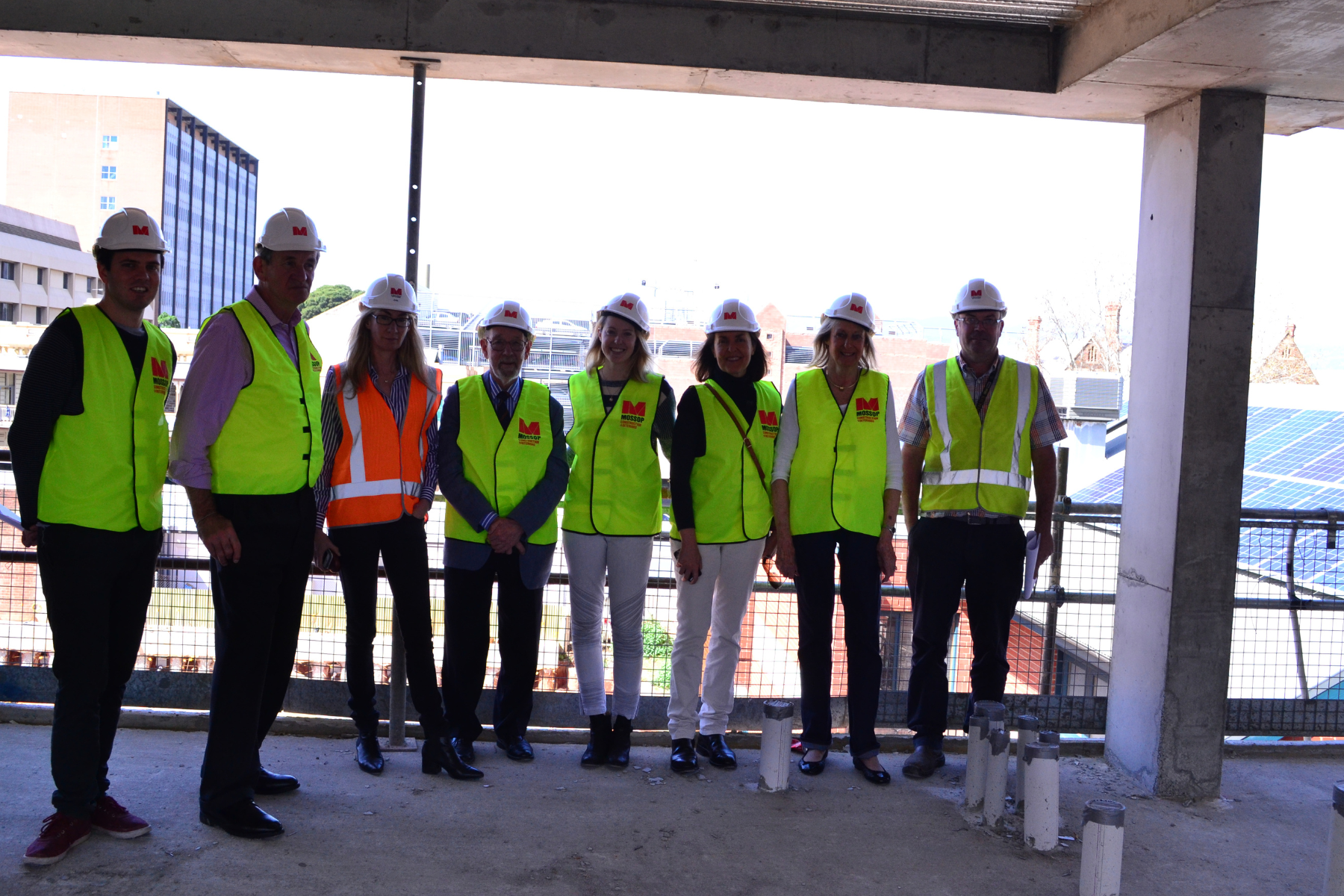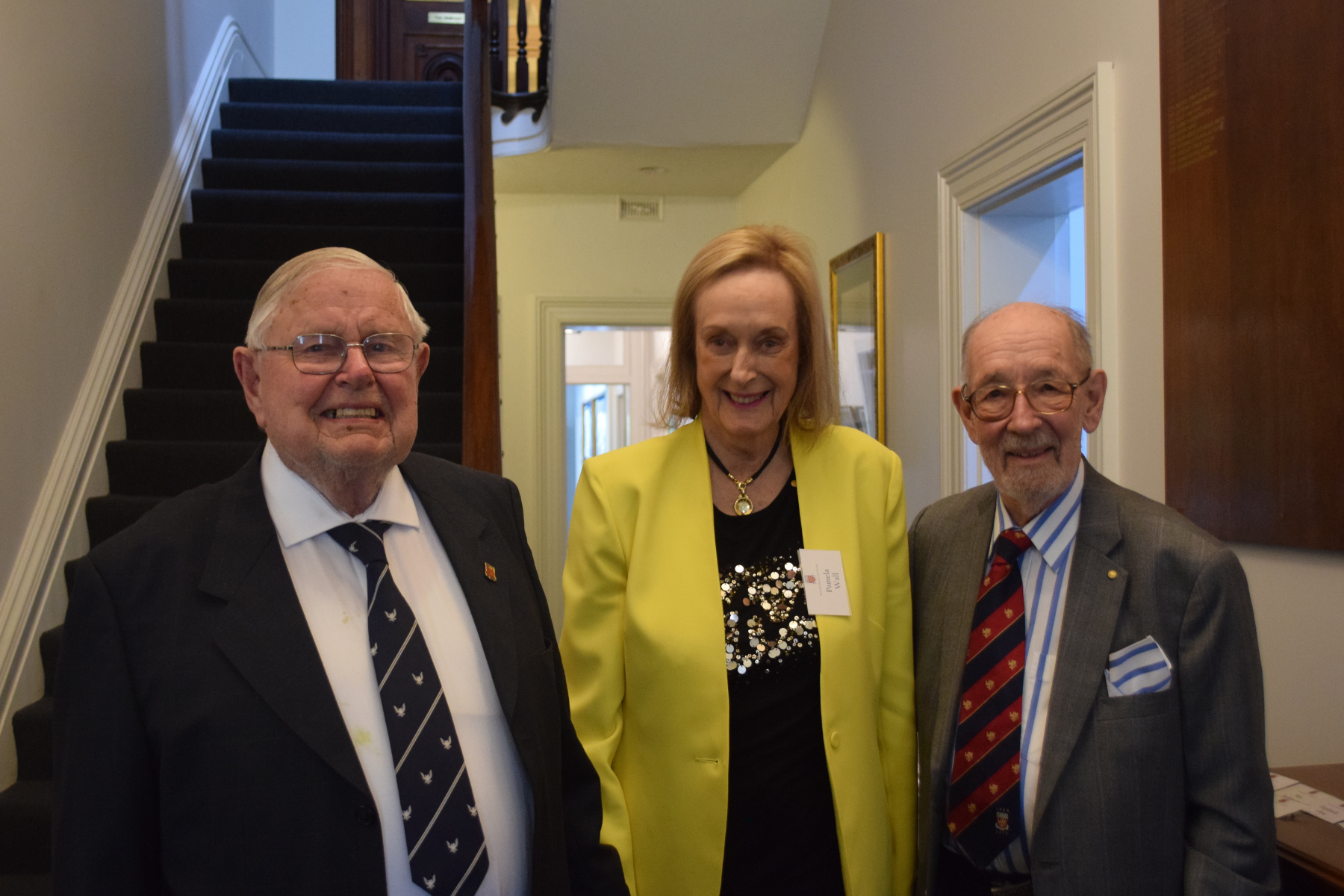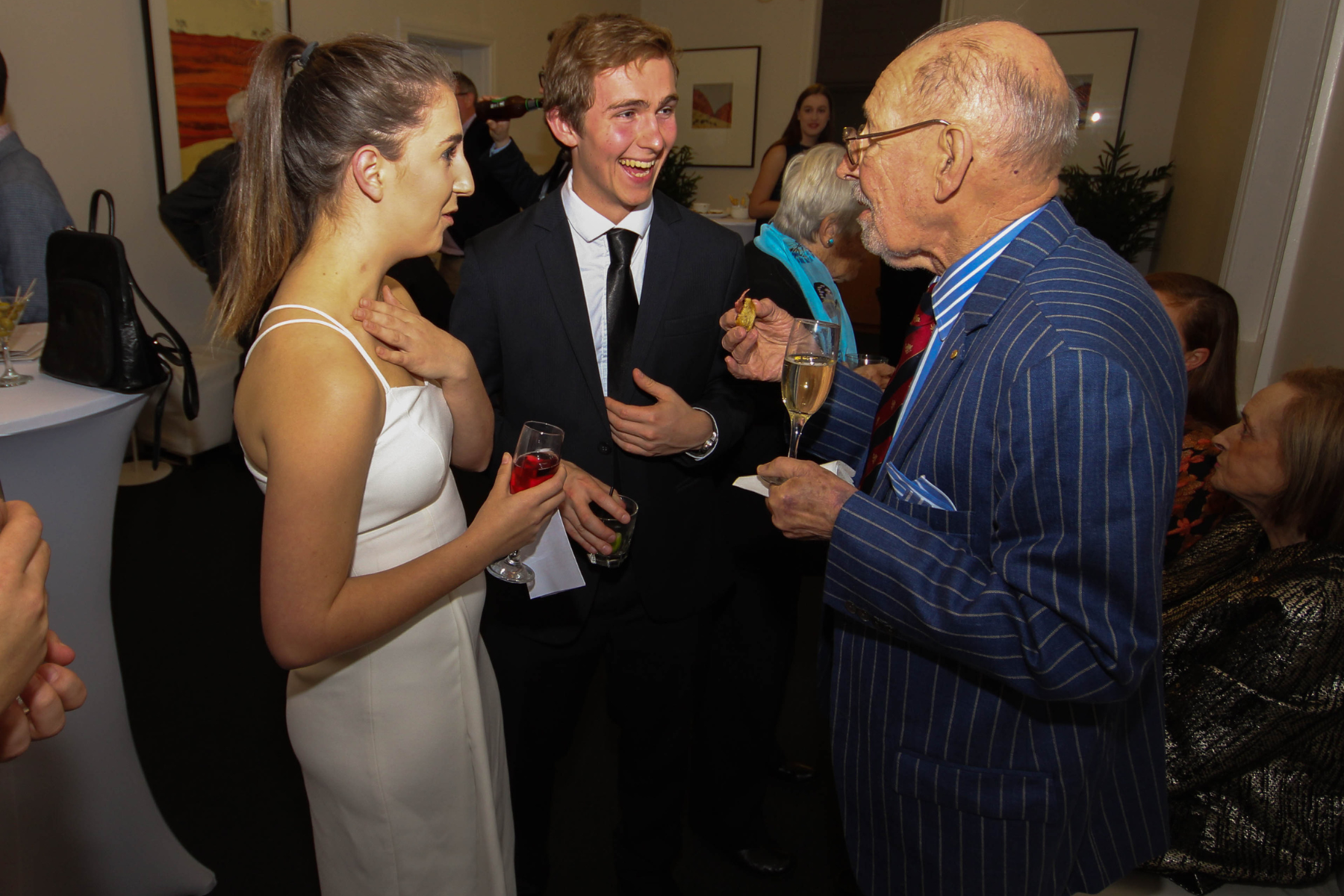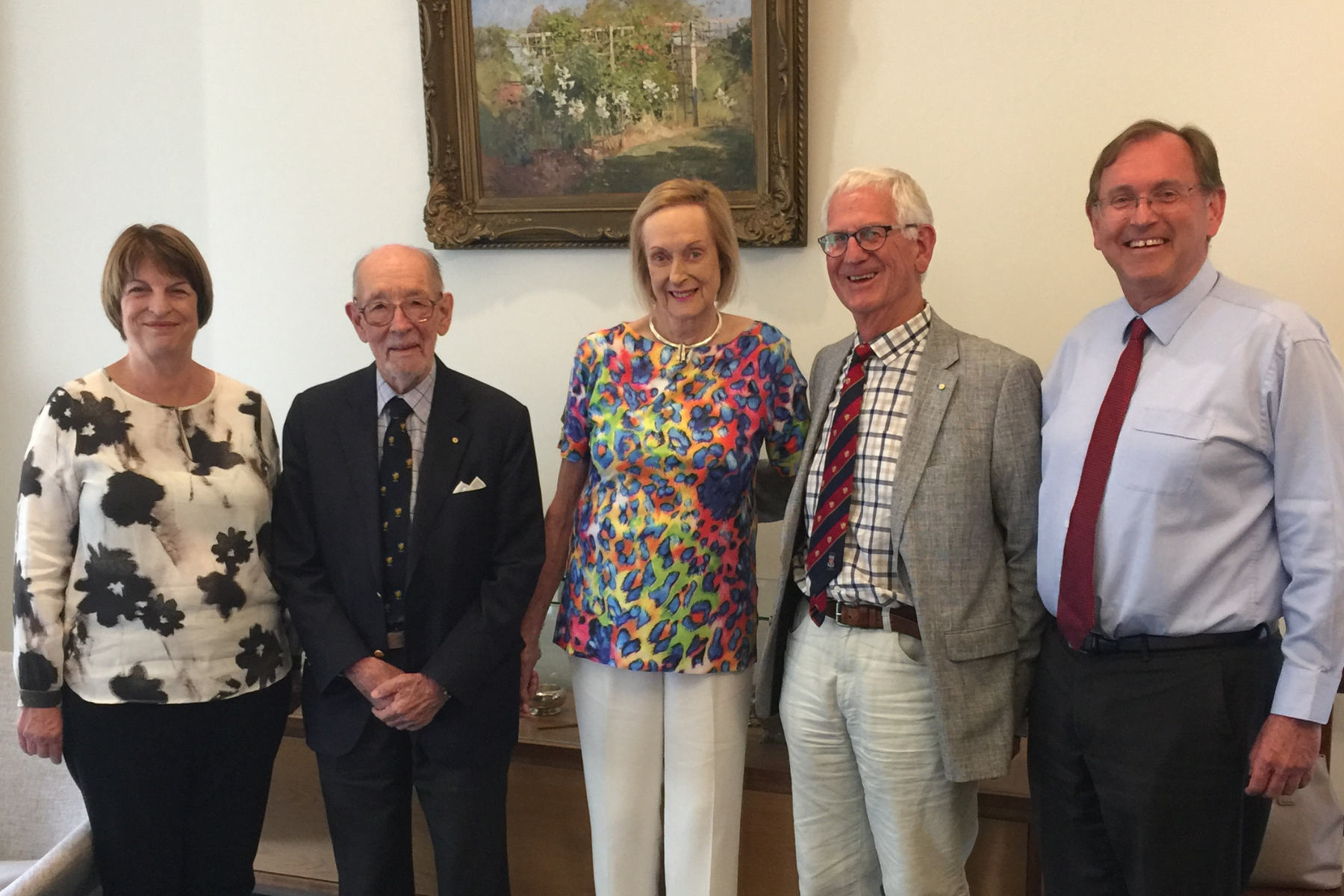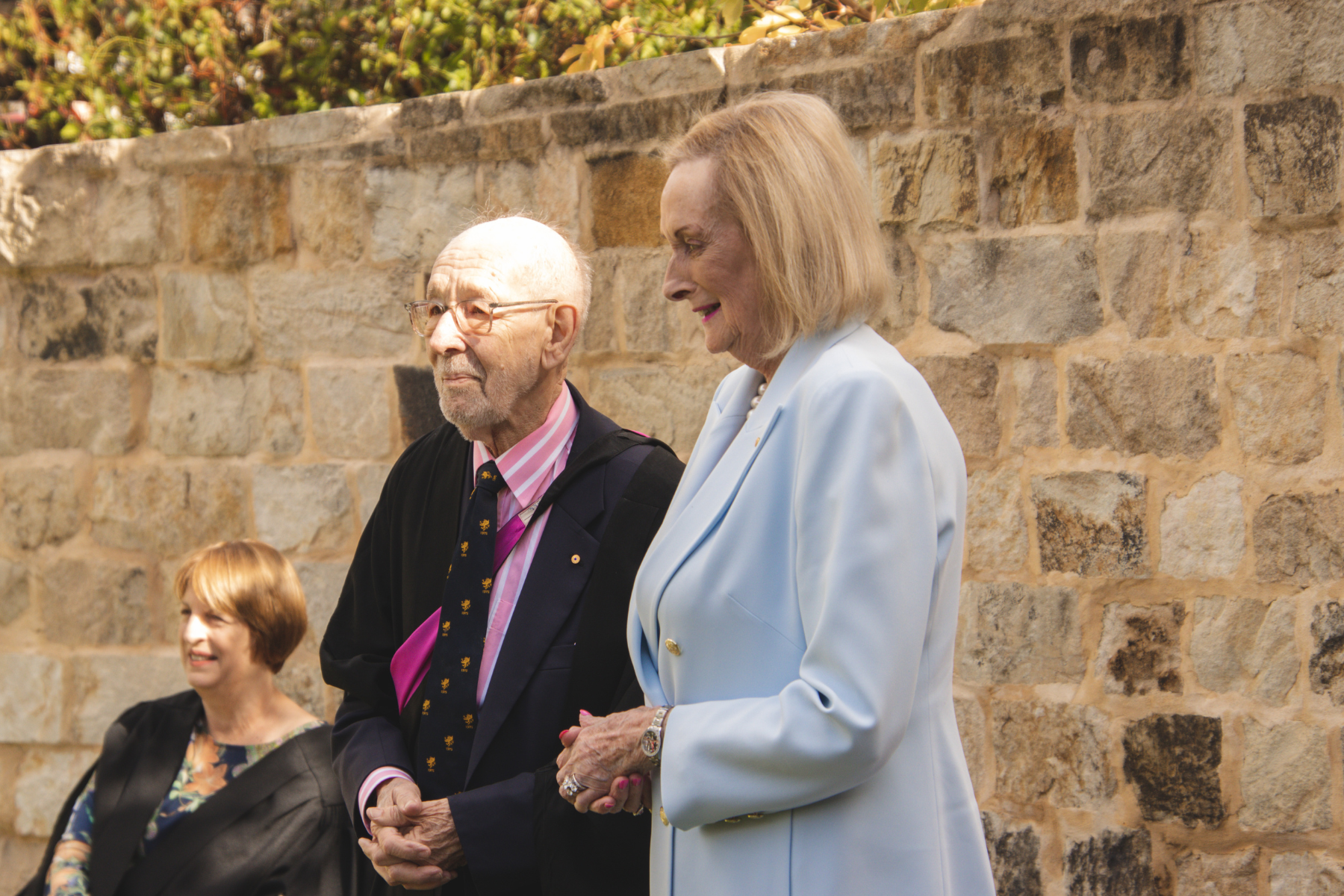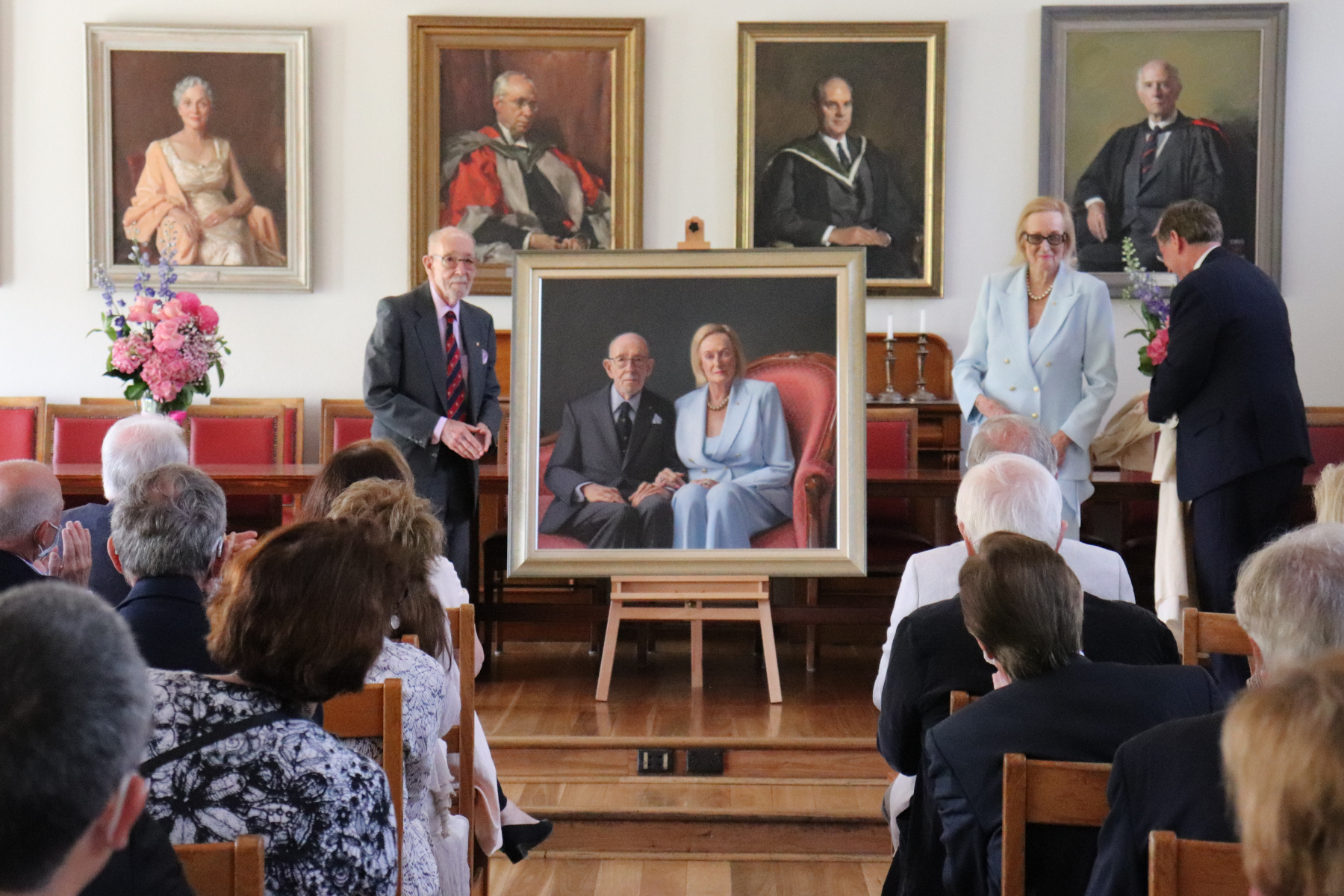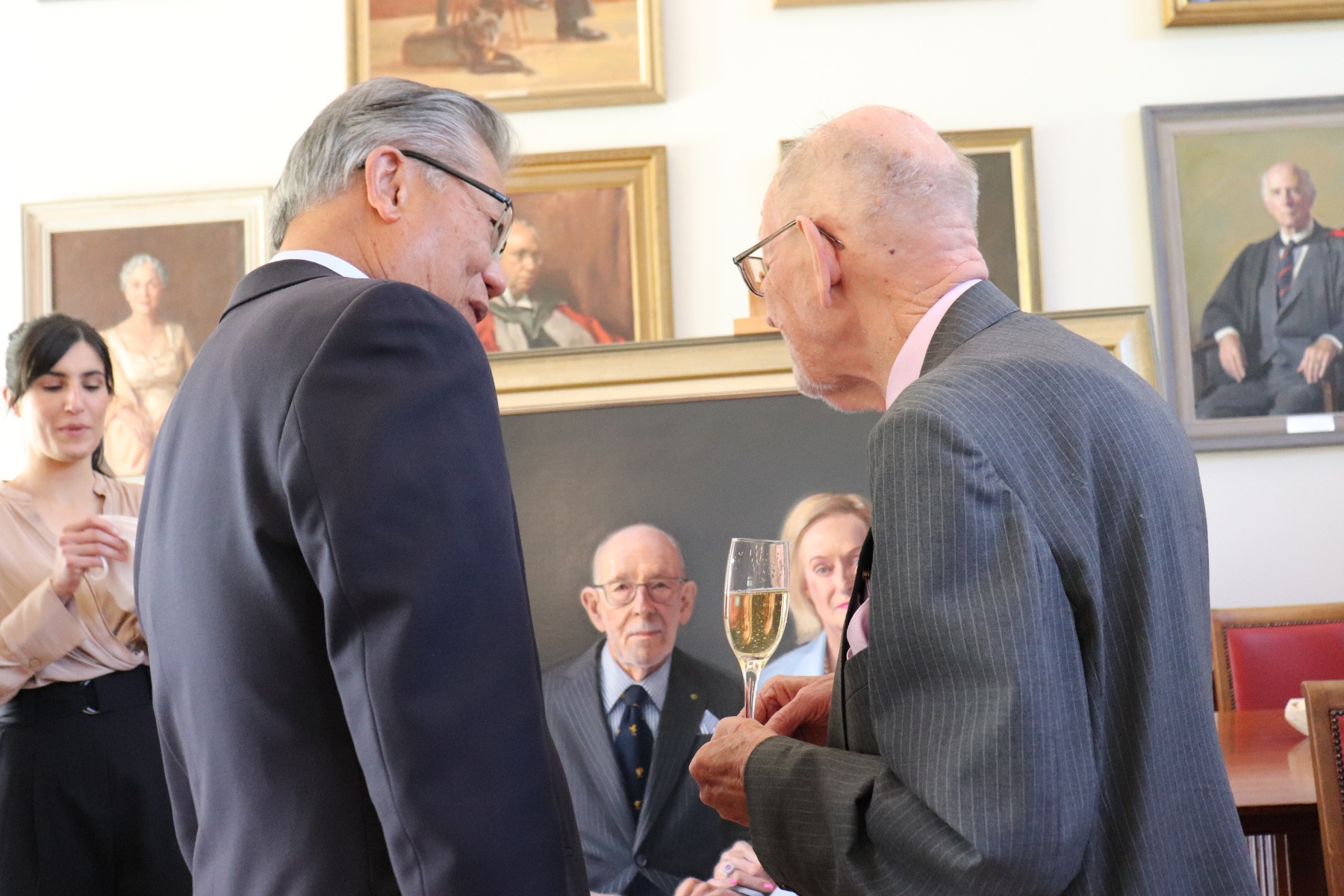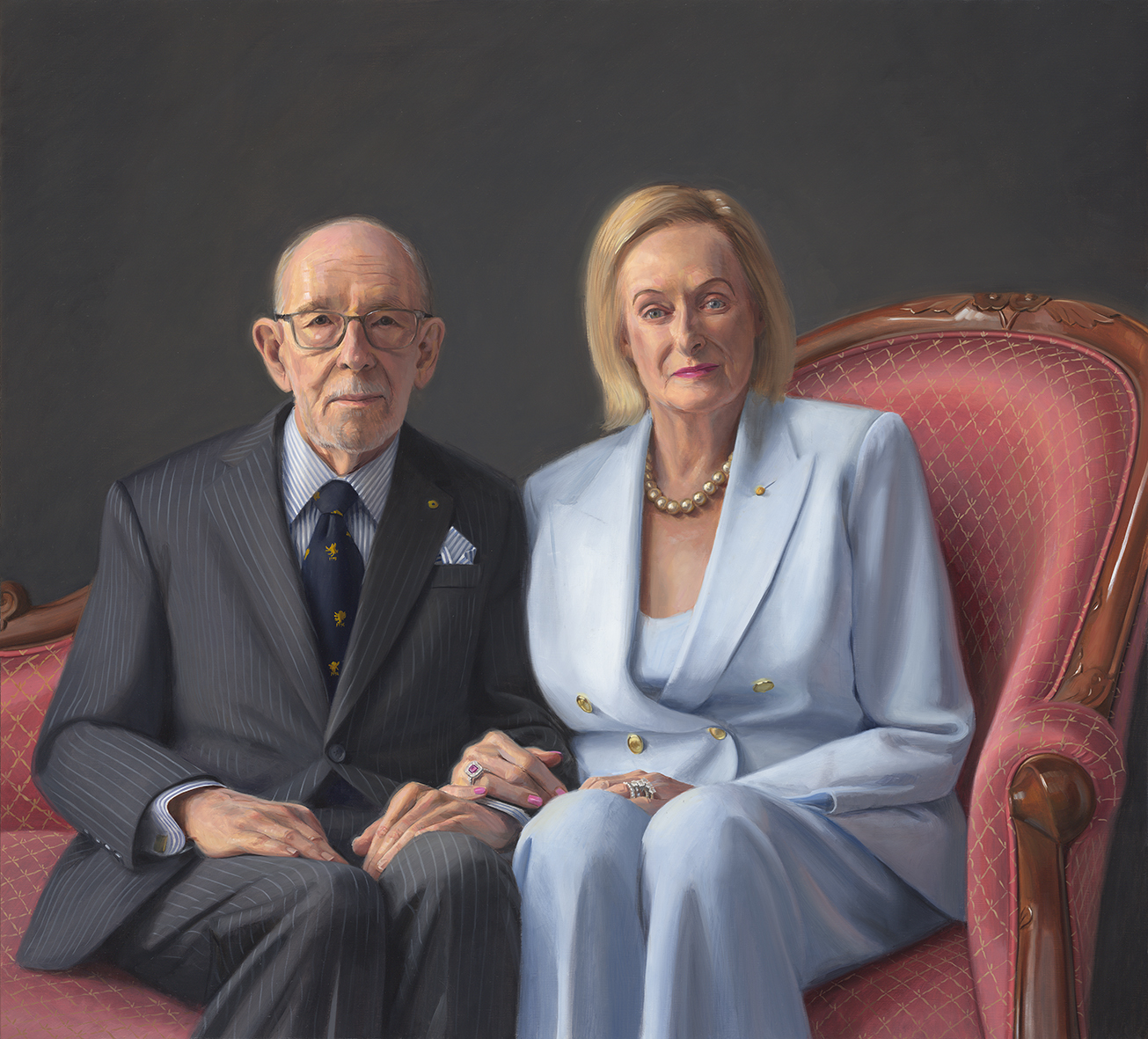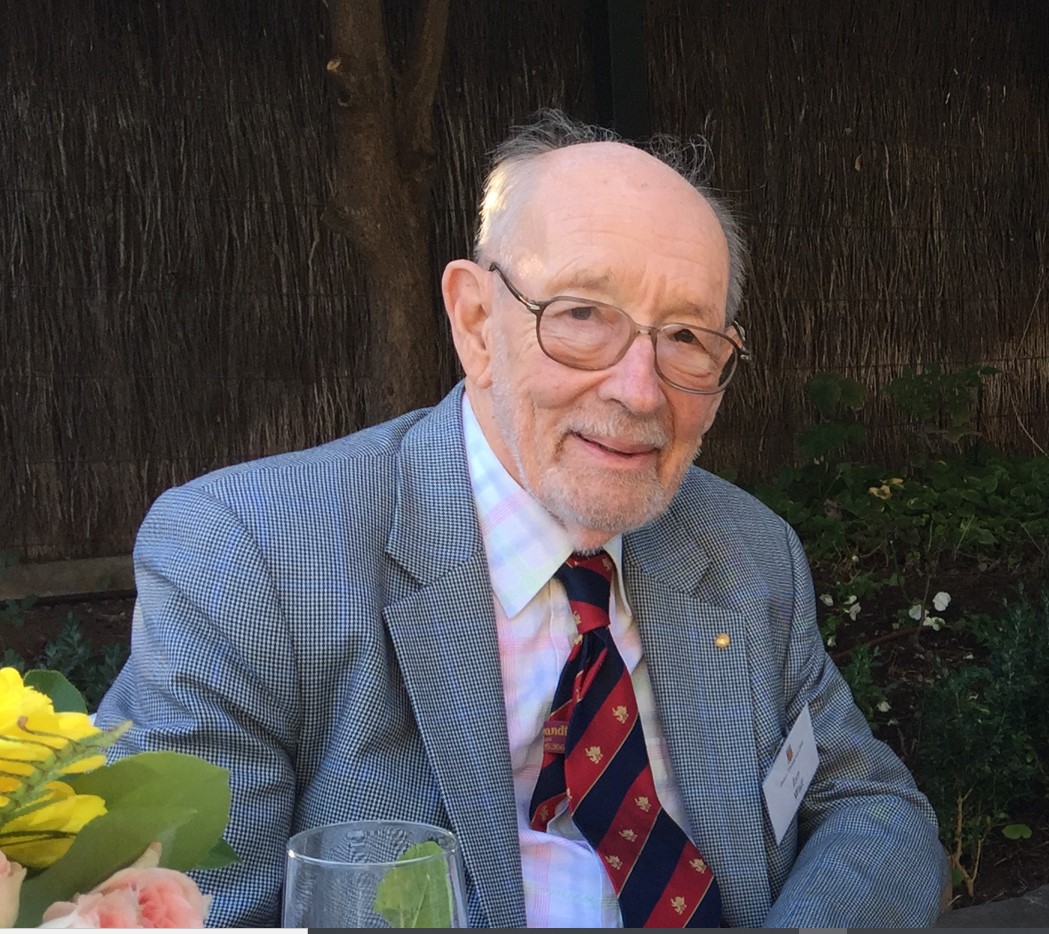DR IAN BAKER WALL AM
15 May 1931 – 26 October 2022
A service in celebration of the life of Dr Ian Baker Wall AM
was held in St Peter’s Cathedral, Adelaide,
on Friday 11 November 2022, followed by a reception at St Mark’s College,
The service may be viewed here.
The Order of Service is here.
The eulogy by Hon. Steven Marshall MP is here.
The eulogy by Professor Don Markwell, Head of St Mark’s College, is here.
The homily, given by the Most Rev’d Geoffrey Smith, Archbishop of Adelaide and Primate of Australia, is here.
The St Mark’s College community deeply mourns the passing of Ian Baker Wall AM (15 May 1931 – 26 October 2022).
Ian Wall was a student at St Mark’s from 1950 to 1954, the largest donor to the College in its history, an Honorary Fellow of the College, and a Governor of the College Foundation. His joint portrait with his wife, Pamela Wall OAM, hangs in our dining hall, an expression of gratitude for their immense contribution to the College.
A brilliantly successful engineer and businessman, Ian Wall was the co-founder of the international electronics company Codan, and became, with Pammie Wall, an extraordinarily generous supporter of many institutions, organisations and causes in South Australia.
We have extended our deepest sympathy to Pammie Wall, and to their daughter, Annabel Wall, on Ian’s passing. Our hearts go out to them at this sad time.
The flags at the College are flying at half-mast as a mark of respect.
A service to celebrate Ian’s life will be held in St Peter’s Cathedral, 27 King William Rd, North Adelaide, on Friday 11 November 2022 at 2 pm. The service will be followed by a reception at St Mark’s College. All are welcome. The service may also be viewed here.
The following tribute to Ian is adapted from the Head of College’s speech at the unveiling of Ian and Pamela Wall’s portrait at St Mark’s last year:
In the history of this College, no one has been more generous to St Mark’s than Ian and Pamela Wall.
Theirs is a uniquely special place in the current life and in the history of this College, just as theirs is a very special place in the South Australian community, to which they have contributed so much, both through the development of a remarkable and innovative international business based in Adelaide, and through their extraordinary and unassuming generosity to so many good causes.
In 2008, Ian was honoured with the Medal of the Order of Australia for “service to business, particularly through the design and manufacture of electronic communication equipment, and to the community through philanthropic activities”. In 2019, he was further honoured “for significant service to the community through philanthropic initiatives”, becoming a Member of the Order of Australia.
In his speech on his election as an Honorary Fellow of St Mark’s in 2008, Ian described himself as the “only child of parents of modest means [his father was a Master Butcher in suburban Adelaide] who wanted the best opportunity in life for their son”. Growing up, Ian had always been – as he once put it – “interested in how things worked, electrical things, about dismantling them and putting them together again”. And so by the age of 13 or 14, perhaps younger, he was set on becoming an engineer.
Ian was a student at Pulteney Grammar, did intermediate physics and chemistry at the School of Mines and Industries, and then completed his secondary education at St Peter’s College. His application form for entry to St Mark’s in 1950 says that he participated at Saints in the Science Society, of which he was Secretary in 1949, and in the Automotive Society.
Ian came into residence as an undergraduate student at St Mark’s in 1950, and as he later said, “my life was really centred around St Mark’s for [nearly] five years”.
An editorial note in the College magazine, The Lion, of Ian’s first year described The Lion as enabling Collegians “to watch ourselves in retrospect, a company of young men marching slowly to meet the life that lies ahead”. The references to Ian in The Lion each year enable us to see him as a young man moving quite rapidly to make the life that lay ahead.
In each of the years that Ian was a resident student at St Mark’s, The Lion records aspects of his life here – his progress through his degree in Electrical Engineering at the University of Adelaide, including his being recommended for the Electricity Trust Prize in 1954; his participation in the University Squadron; his service for three consecutive years on the College Club Committee, including in 1954 as Treasurer; his role in the student escapade in the Adelaide Hills known as Alpine Day, including in one year his making “a lightning detour home” to collect “a large quantity of chops and steaks” to rescue the Alpiners from the grim prospect of spaghetti and saveloys; his being thanked for “handling … the backstage and technical arrangements” for the College Revue; and more.
Along the way, Ian had become a well-regarded College identity with the affectionate nickname “Prof”. In many of the references to him in The Lion, he is simply referred to as “Prof” or “Proff”.
The Lion both in 1951 and 1952 had a column called “Table Talk” which purported to record conversations over a College meal. In the 1952 Table Talk spoof conversation, “Proff Wall” declares what he calls “some strictly high-frequency stuff”. He says: “If its feed-backs, camshafts, differentials, piston rings, or distributors you’re enquiring about, just come to old Proff Wall. Yeah, that’s me. With mechanics I’m dynamite…” Never a truer word spoken!
Later in the spoof scene, Proff Wall “leaps from the dining hall into a high-powered sports car, and within a split second the only trace is a line of recumbent pedestrians reaching to infinity.”
In his Report for the 1954 Lion, the President of the College Club, Michael Hobbs, expressed thanks to members of the Club Committee, in which Ian was Treasurer, for “the efficient manner in which they performed their various tasks”. The Club President wrote: “I would like to pay particular tribute to Prof. Wall, who moved as facilely within the complexities of the treasurership as he does within those of a ten-valve high frequency amplifier…” Is it any surprise that within five years Ian and his co-founders were to create what became Codan, the hugely and globally successful electronics company?
The Club President’s Report in The Lion of 1954 also recorded: “It was with regret that we received Prof’s resignation from the College Club at the end of the second term…” The reason is not hard to find – because the same edition of The Lion recorded the happy news of the marriage later in the year of “Prof. Wall” to Pam Hogon. This August, Ian and Pammie celebrated their 68th wedding anniversary.
Pammie had been a student at what is now St Peter’s Woodlands Grammar School, and when Ian first met her she was working at the National Bank as a Ledger Keeper before starting nursing at the Women’s and Children’s Hospital.
Ian and Pammie’s has been a brilliant partnership. Ian has spoken of Pammie supporting him “in every endeavour” throughout their married life (which includes her serving for some 20 years on the Board of Codan). So much of what they have done, including their philanthropy, has been done together, as a team.
It is for this reason that the College’s Library is called the Ian and Pamela Wall Academic Centre. They are jointly Governors of the College Foundation. And it is very fitting that the magnificent portrait of them in the College dining hall, by Tsering Hannaford, is a joint portrait – just as Robert Hannaford’s very different portrait at Carrick Hill is a joint portrait.
In an oral history interview for the College in 2013, Ian spoke of his years in College. He spoke of how College life developed his social skills: having grown up as an only child, he was now interacting more than ever before with other young people, and developing a much more extensive social life. He spoke also of the lively discussions with a broad mix of fellow Collegians, including in those days many Western Australian medical students and Colombo Plan students from Asian countries; other student activities; the wise counsel and guidance of the Master, Archie Price, and the Vice-Master, Bob Lewis; the tutorial system, including the tutorial support in mathematics of Dr Mary Harding, Principal of St Ann’s; the pastoral care; the interesting guest speakers – what Ian called “the total experience”.
Ian said that his years at St Mark’s gave him “good preparation for the things that I needed to do in my adult life”, and that without St Mark’s, he would not have had the success that he has had.
Ian also said that his parents “had a great belief in the University College concept of education” and so had made it possible for him to attend St Mark’s. Could there be a better vindication of “the University College concept of education”, or of parents creating educational opportunities for their child?
One particularly important conversation for Ian was with his Saint’s and later St Mark’s College friend, Dick Brown, who at St Mark’s was studying mechanical engineering while Ian was studying electrical engineering. As Ian recounts it, one day Dick Brown said to him: “Ian, I think you ought to have a yarn with Alistair Wood”.
Ian replied: “Yes, Dick, why would I want to do that?” to which Dick Brown replied: “I think you’ve got a lot in common”.
Perhaps somewhat sceptically, Ian did have a yarn with Alistair Wood, and did find a lot in common. Together they went on to make scientific equipment for the physics, chemistry, and mechanical engineering departments. The friendship formed at that stage led Ian, Alastair, and a third friend, Jim Bettison, together in 1959 to start the company that became Codan. One of Codan’s two principal design engineers in its early decades, Ian retired from its Board in 2009, after 50 years’ service as an innovative engineer and a clear-minded businessman.
It has been authoritatively said that Ian and his co-founder Alastair Wood “demonstrated exceptional engineering skill by personally developing the exceptional high frequency (HF) radio technology and products that were the cornerstone of the success of the Codan business, and which over decades have provided such important assistance to many people worldwide”.
As well as in remote Australia, “Codan’s products are used worldwide by most UN, NGO and other humanitarian and aid agencies, and by government and many private organisations”, and Codan has received a number of awards for export achievement, innovation, and manufacturing.
On his election as a Fellow of the College in 2008, Ian said:
“When I look back, I see that I owe much of my success to my years in residence at St Mark’s and the wise counsel of Archie Price and Bob Lewis just as students in later times have received from the College and the several Masters who followed on.
“I firmly believe that the future of our children, grandchildren and, indeed, society itself will depend on the leadership of well educated citizens. That is why I am a strong supporter of St Mark’s and other institutions of learning.”
Ian has also spoken of his feeling “almost a duty that you should reinforce the opportunity for those who are to follow in your steps”.
It is no secret that Ian and Pammie’s support has been indispensable to the completion of the flats in the north-west corner of the College, one block of which is known – in gratitude to both Ian and Pammie – as “Wall”; the East Wing, which includes the gym, the Ian and Pamela Wall Academic Centre, and two levels of excellent student accommodation; and the secure multi-storey car-park, including in 2020 the addition of new levels to the carpark, taking our car parking capacity to a remarkable 160 spaces – a great amenity for our students, providing safe parking off the street.
We could not be more grateful for this, and for Ian’s support, with Pammie, in so many other ways over the years – for the Library, the gym, computer connections, the Gas Truck, the Downer House lift, and scholarships, which are a central focus for the College today – in Ian’s words, to “reinforce the opportunity for those who are to follow in your steps”.
Ian and Pammie’s exceptional contribution to St Mark’s, along with their outstanding support for so many other institutions and organisations, featured prominently in the citations read in a special bedside ceremony in Ian’s hospital room on Monday 24 October, when both Ian and Pammie were presented with honorary doctorates by the Vice-Chancellor of the University of Adelaide.
Ian Wall’s contribution to St Mark’s College will endure in perpetuity.
We remember him with profound admiration, gratitude, and love.
May he Rest in Peace and rise in glory.
There are tributes to Ian here.
